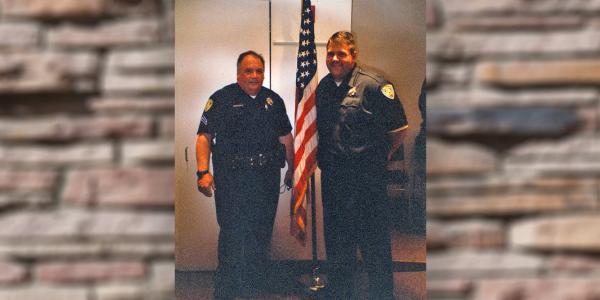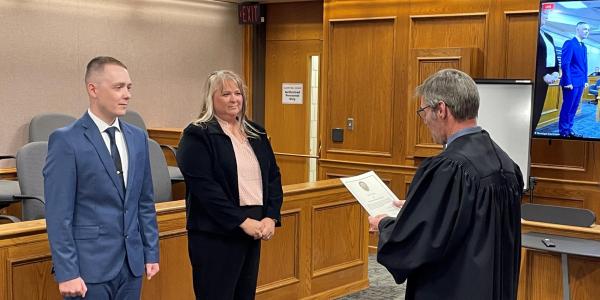Mary Ann Shea, the outgoing director of the Faculty Teaching Excellence Program (FTEP) and director of the President’s Teaching Scholars Program, reflects on her career promoting student-centered teaching and learning at CU.

From 1986 to 2020, FTEP offered faculty programming centered on evidence-based teaching practices while developing an understanding of how students learn best to support student success. CU Boulder’s new Center for Teaching & Learning will continue FTEP’s mission of supporting faculty in the classroom.
Shea’s emphasis on teaching and student learning has influenced many across campus over the years.
“Mary Ann has helped countless faculty meet the challenges of university teaching. She has helped countless other faculty, who have volunteered under her guidance, do the same,” said Clayton Lewis, professor of computer science. “Many faculty, and students, do what they do, and are what they are, because Mary Ann reached out to them.”
Below, Shea discusses some of what she’s learned over her career:
On the importance of living and working in accordance with your values
I’m guided in my work by the values I live by: communicating inclusively, aiming for high standards and treating others with respect, kindness and graciousness. Being humane is a big part of my life. It fosters my own growth and development.
I value curiosity—intellectual and relational. When I was just starting out, I thought that I needed to know everything. Now I know that it’s better to be inquiring and selective, because you can’t do it all.
On educational philosophers who have influenced her over the years and grounding oneself in the literature and the theory as you develop practices
Before coming to CU, I earned a bachelor’s degree in English and taught English as a second language in the Boston Public Schools system. I studied at Boston University, where I earned a National Education Association certificate in teaching ESL. At the time, there was not a lot of literature in the field. Paolo Freire stood out for his efforts to understand people who come to this country from other cultures speaking different languages. He was an inclusive educator and practitioner long before the concept was popular.
His writing was very important to me as part of my educational background, and I tried to do “his” kind of teaching. When I came to CU and discovered that Freire was everywhere, it was exciting to see that his influence was widespread in the world of education.
Another foundational person for me has been John Dewey, the philosopher and educator. He thought a lot about the classroom, about what goes on there, and about how students can be motivated to learn. His writings taught me about active learning, which is still a very important element of higher education. He insisted on it, and he had a lab school at the University of Chicago where everybody learned actively—the teachers and the students. He not only had a theory, but he also had the pragmatism to put that theory into practice.
Dewey also knew that we need to offer students experiences beyond the classroom. He promoted the idea of experiential learning, which wasn’t offered at CU when I came here. Now we have it as part of coursework and programs, and it's very popular with our students.
On building teaching-centered programming throughout her career
A number of years ago, I went to a conference for the American Association of Higher Education (AAHE) and brought back the notion of creating a teaching portfolio. We barely knew at the time how to define teaching, let alone learning. Faculty and instructors liked the teaching portfolio as a systematic way of looking at accomplishments in teaching, and it caught on. Deans adopted it; program directors adopted it; department chairs adopted it.
Over time, the focus on pedagogy in higher education has shifted to a focus on student learning. The AAHE is now defunct, but the Association of American Colleges & Universities has adopted the idea of a teaching portfolio and expanded it to include the climate for teaching and learning in a classroom. That’s been very important to my work.
Educators are experts in how to teach their discipline. Also, classroom teaching has shifted to a focus on how students learn. The algorithm I developed suggests that faculty members follow a tool, beginning with preparing goals for learning, making those transparent on the syllabus, understanding what students find very difficult to learn and redesigning parts of the course for student success.
It’s also critical for teachers to assess whether their goals for student learning have been met. One of my initiatives has been the Summer Assessment Institute for Teaching, which is offered through the Faculty Teaching Excellence Program. Faculty members from across the campus gather for a week to work with and learn from each other. They find things in common and discuss how learning in the classroom takes place.
A new initiative for me is the Making Teaching and Learning Visible (MTLV) program. The program focuses in essence on how instructors can learn to help students by redesigning one of their courses in light of their inquiry into the nature of teaching. We don't give our faculty enough credit for that kind of inquiry. MTLV allows the process to be published online for faculty at CU and anyone beyond to read. The hope is that peer faculty, after reading about another faculty member’s struggle, will consider making changes in their own courses.
On the importance of democratizing education
Democracy is characterized by egalitarianism, freedom and equal rights. It is also characterized by advocacy for those who would otherwise be left behind.
My first job at CU was in the English department for the Educational Opportunity Program (EOP). The EOP brought students from underrepresented backgrounds to campus and served as a bridge program. We had as many as 500 enrollees at a time, many of whom continued their studies at CU Boulder. We taught them how to read, how to study and how to write, and we tried to create a way for them to honor their lineage. Today, many programs on campus are built on the history of the EOP. The campus strategic plans maintain educational opportunities as a way of assuring success and inclusivity, and I applaud the university for embracing all of our students and their needs.
At the same time, we can’t make assumptions about any student. A student may appear to have everything going for her. We may think she’s got it all together, that she's never vulnerable. But that’s simply not true; we’re all vulnerable. Stigmatizing people is something we have to be very careful about. When we democratize education, we have to create equity by getting to know all of our students and by attending to their many different needs. I’ve learned this from the students I've taught and the students I’ve mentored.
On the importance of educating all students and focusing on teaching as well as learning from one another
Everyone at CU Boulder is learning, including faculty and staff. Even the most advanced researchers and scholars learn in the course of writing, doing peer reviews, publishing essays and books, and reading the reviews of the scholars who critique their work.
Finding people to work with in our own community is a wonderful way to use the resources of the campus and to develop relationships with colleagues and friends. Learning happens throughout our community, not just in the classroom.



